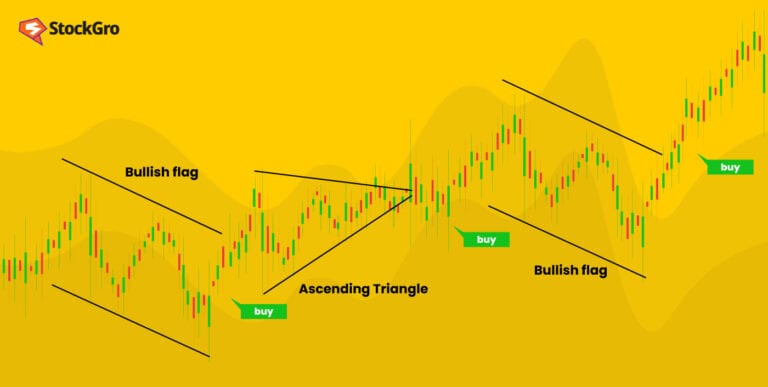
In financial markets, an opportunity that can extend beyond the traditional boundaries of trading is after-hours trading. This innovative extension of trading activities allows investors to trade securities beyond the confines of regular market hours. As the conventional trading day gets into the shadow, after-hours trading illuminates another venue for investors. They can take advantage of earning announcements by companies and capitalise on breaking news or global events, affecting the market significantly.
You will delve into the intricacies of after-hours trading, understand its mechanics, benefits, risks, and how investors shape investment strategies to trade in this unique landscape.
Understanding after-hours trading
There is a fixed stock market trading time in India to participate in trading and investing activities. The regular trading hours in India are 9:15 AM to 3:30 PM, Monday to Friday.
After-hours trading refers to the activity of buying and selling financial assets after regular market hours. It is an opportunity to respond to market changes occurring after the closing bell in the market.
- Market Timings on National Stock Exchange (NSE)
| Session | Timeframe |
| Pre-opening session | (9 AM – 9:15 AM) |
| Regular trading session | (9:15 AM – 3:30 PM) |
| Closing session | (3:40 PM – 4 PM) |
- Market Timings on Bombay Stock Exchange (BSE)
| Session | Timeframe |
| Pre-opening session | (9 AM – 9:15 AM) |
| Regular trading session | (9:15 AM – 3:30 PM) |
| Closing | (3:30 PM – 3:40 PM) |
| Post close | (3:40 PM – 4 PM) |
The BSE closing time in India can be divided into two sessions – closing session and post close session.
Orders placed on exchanges after market closing time in India and before starting the next trading session are called AMO (After Market Orders). Collectively, after-hours trading and pre-opening trading are named as extended-hours trading.
You may also like: Essential guide to candlestick patterns for beginners
After market order timings explained
As the name suggests, after-hour trading takes place after the market closes and before it opens for the next trading session. The regular stock market trading session closes at 3:30 PM and resumes the next session at 9:15 AM for regular trades. The designated timing to place after-market orders (AMOs) is from 4 PM to 8:55 AM on prominent stock exchanges in India – the BSE and the NSE.
However, the timeframe for AMOs is subject to prevailing market conditions and fluctuations. Specific regulations and guidelines pertaining to the kind of securities and order types. After-hours trading adheres to these protocols set by the regulatory body – the Securities Exchange Board of India (SEBI).
Also read: Why is everyone talking about equity shares: Essential features & benefits!
Preparing for after-hours trading
Earlier in the open outcry trading system on ground-based stock exchanges, only high net-worth individuals (HNIs) were allowed to place AMOs. Thanks to technology and electronic communication networks (ECNs), retail investors can participate in after-hours trading.
After-hours trades can be placed like regular trades for equity and derivatives. Using your demat account and trading account, you can select AMOs on the broker’s trading platform. Ensure that you choose a SEBI-registered stock broker to open your demat and trading accounts. Once you place an after-market order, your order will be forwarded to the relevant stock exchanges when the next trading session begins.
Also read: Key risks in investing in the stock market
Benefits of after-hours sessions
After-market trading keeps you ahead of other investors. Therefore, many others explore after-market trading. Benefits of trading during after-hours sessions include:
- Extending trading window
After-hours trading helps traders with extended trading windows beyond the limitations of regular market hours. It offers greater flexibility in executing trades, especially for those committed professionally during the day.
- Strategising investments well
After-market trading gives you adequate time to plan your trades based on thorough analysis and market trends. You can analyse how an asset behaved during the day, and look out for corporate news or announcements that can impact the assets.
- Reduced competition
There can be a more controlled trading environment with fewer participants in after-hours sessions. The potential for reduced competition allows skilled traders to find more favourable entry and exit positions.
- Potential for better prices
The after-hours market offers an opportunity for trading at better prices in certain situations than during regular market hours because the after-hours market involves price adjustments based on news and events that occur during closed markets.
- Reducing losses
If used wisely, AMOs can help skilled traders to reduce losses with anticipated impacts of news, announcements or events that could result in a declined market. You can plan sell-offs ahead of the slump to cut your losses.
- Global opportunities
There is an interdependent relationship among stock markets across countries. After-hours trading allows investors or traders to benefit from international market movements occurring outside local trading hours. Indian stock markets are impacted by international markets, especially NASDAQ & DOW.
Risks associated with after-hours trading
After-hours trading is undoubtedly a fascinating concept of financial markets that can potentially yield substantial gains. However, the ability to capitalise on overnight market changes comes with risks. Risks of after-hours trading include:
- Reduced liquidity
After-hours trading sessions typically experience reduced liquidity due to lower trading volumes than regular trading hours. It can make it challenging for traders to execute trades at expected prices. To reduce the impact of reduced liquidity, traders must strategise their steps before entering an after-hours session.
- Potential price gaps
The after-trading hours can result in price gaps, i.e. discrepancy in security’s price at the beginning of an after-hours session and the previous session closing. This discrepancy may lead to unexpected and unfavourable trading conditions for traders.
- Heightened volatility
Individuals engaging in extended hours trading may have to manage increased volatility due to lower trading volume. There can be rapid price movements, bringing both potential gains and risks together.
- Limited Information
Releases and events occurring after the regular closing hours of the market can impact asset prices during after-hours sessions. There may be inadequate resources to verify a news piece, making it challenging to involve in effective research. If the market reacts to rumours, it can offset the advantages for early birds.
Risk management strategies
While the strategy guidelines will be the same for trading after hours and during regular market hours, traders should make extra accommodations for increased spreads, lower volume, and bigger price moves when trading after hours. Here are a few strategies for after-hours trading:
- Gap trading strategy
Most gaps occur due to sudden news releases or an event. Traders are keen on capitalising on price gaps between an asset’s closing and opening price in the after-hours and can indulge in gap trading. They need to identify stocks with significant news or events that may cause price gaps. If the selected asset opens higher or lower than its closing price due to any news, traders can take advantage of such price differential.
- Volatility breakout strategy
To deal with heightened volatility, traders employ the volatility breakout strategy. It involves identifying securities with significant volatility during after-hours sessions. Traders need to set up buy or sell after-hours trading orders based on breakouts from price ranges.
The closing
The foundation of successful after-hours trading is adequate knowledge, market updates and diligent research. Stay informed about corporate arrows, relevant news, and events to empower yourself. Ensure that you calculate appropriate position sizes and employ trading strategies to manage volatility and liquidity concerns to trade as an informed trader during extended hours.

